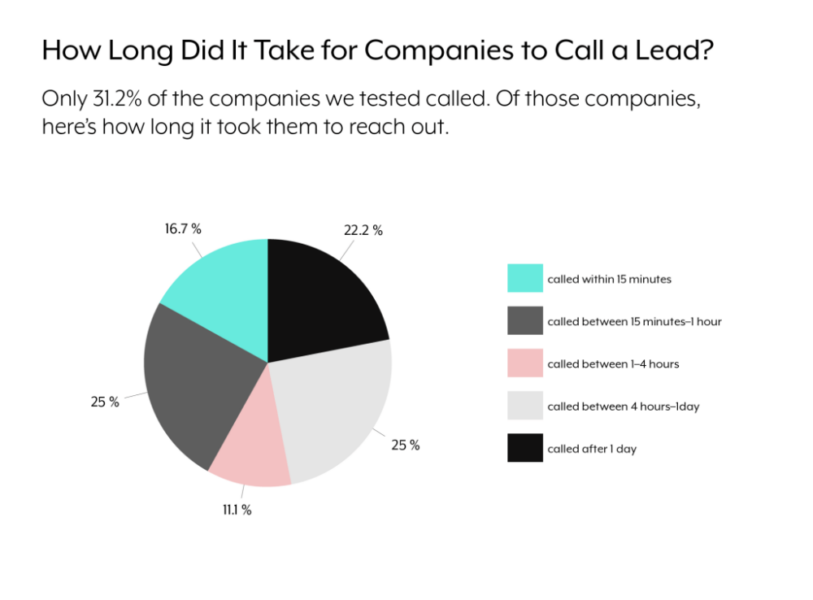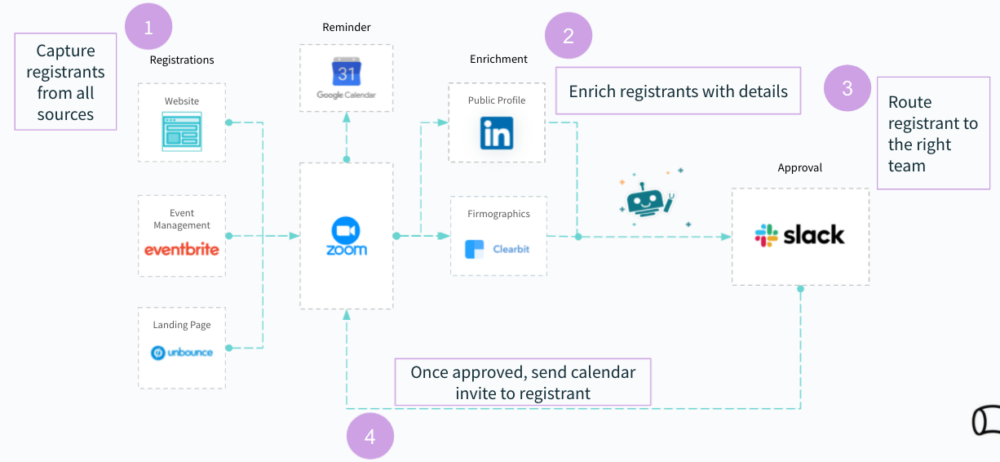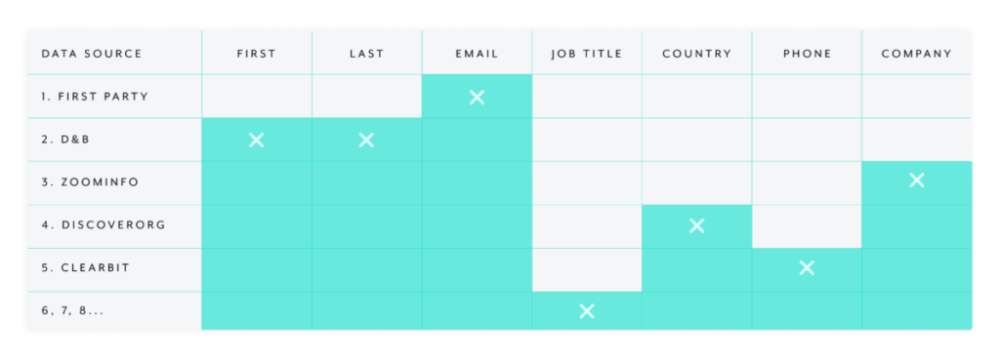B2B organizations are failing to respond to inbound leads promptly.
We learned this ourselves when one of our team members completed demo request forms for 114 B2B brands and found the following:

Though this unflattering speed to lead can be attributed to many factors, it largely comes down to organizations’ failures to manage their data, tools, and teams effectively. This includes copying and pasting data across apps, moving slowly to enrich leads, manually assigning leads to sales reps, etc.
Fortunately, lead automation can help.
By turning to automation, your team can capture leads in various systems automatically, enrich them in near real-time, and route each intelligently. The result: Your team is better positioned to close more qualified leads faster, while delivering experiences that delight everyone involved—including your sales reps and prospects.
We’ll show you what’s possible with automation by breaking down a few examples, but first, let’s align on the definition of lead automation.
Related: 3 workflows you can implement after integrating your CRM and marketing automation platform
What is lead automation?
It’s the use of automation to enhance any workflow within your lead’s journey. These workflows can fall under lead generation, lead enrichment, lead routing, lead nurturing, among other areas.
Examples of lead automation
Here are some use cases worth implementing:
Remove low quality leads with ease
From hosting public-facing events with your C-suite to launching ad campaigns across social media channels, your marketers take on a range of activities in the hopes of generating high-quality leads for your sales team.
Many leads, however, aren’t a fit for your product or service.
Regardless of the marketing activity, you can use automation to quickly and easily identify and remove any unqualified lead that comes in. For example, here’s how it can work if your team is evaluating and accepting (or rejecting) registrants for an online webinar:

1. Once someone registers for your webinar via a platform like Eventbrite, a landing page on your site, or through another medium, the workflow gets triggered.
2. A customizable bot works in real-time to enrich the lead via platforms like Clearbit and Linkedin.
3. The customizable bot then messages a specific channel within your business communications platform—whether that’s Slack or Microsoft Teams. The message includes both the enriched insights it found and whatever was submitted in the event form.
Members of that channel—who presumably manage the event in some capacity—can review each registrant and reject or approve any with the click of a button.
4. Once approved, the registrant gets added to the event’s attendee list in Zoom and they receive a calendar invite for the webinar.
Related: How to implement front office automations
Score leads accurately by accounting for their entire journey
Gauging how warm (or cold) your leads are involves looking at the full set of actions they take.
Uncover the events they’ve attended, the conversations they’ve had on your chat interface, the activities they’ve taken on your site and on 3rd-party review sites, etc. by connecting each system that collects this information with your marketing automation software. From there, you can build a set of data workflows where any time an activity gets added for a lead in one of these apps, the change is reflected in the marketing automation platform, where the lead’s score adjusts accordingly.
Sync lead data between your CRM and marketing automation tool
As your marketing team works to acquire and nurture leads, they’ll want to make sure that once any meets a certain lead score threshold, they’re made visible to sales.
To aid in this effort, you can integrate a customer relationship management (CRM) platform like Salesforce with a marketing automation tool like HubSpot and implement a data flow that keeps data in sync between the two. The data can go beyond contact information and include specific custom objects that help your reps engage with leads more thoughtfully and effectively.
Enrich leads quickly and cost effectively
Before you can route leads, you’ll need to ensure that all of the required fields (in addition to those filled out in the form) get completed.
Here’s how automation can help you do just that—fast.

1. Once a lead comes in, an integration-led automation platform looks for first-party data on them.
In our example above, the platform found the lead’s email address.
2. Using your preferred data enrichment tool, the integration-led automation platform looks up data that’s still missing.
In our example above, the preferred tool is D&B and it found the lead’s first and last names.
This lead enrichment automation works its way down each tool (in your order of preference) in near real-time, with each only looking up information that’s still missing and that you want it to find.
Route leads to sales reps in the platform they’re already using
Since your sales reps are already working in your business communications platform, sharing leads within the tool can help them become aware of hot leads even sooner.
Moreover, to help reps feel equipped in following up, the message notification can include all of the contextual information they’d need on the lead, such as the enriched insights uncovered and the lead’s historical engagement with your organization.
Here’s more on how this lead routing workflow automation can work:
1. Once a lead completes a form for requesting a demo, the workflow gets triggered.
2. A customizable bot enriches the lead, gathers relevant information from your apps, and then routes the lead to a sales rep that’s willing to accept new leads.
3. Within the message, the sales rep can see all of the information on the lead, including the message they left in the form, and they can accept, reassign, or disqualify the lead with the click of a button.
